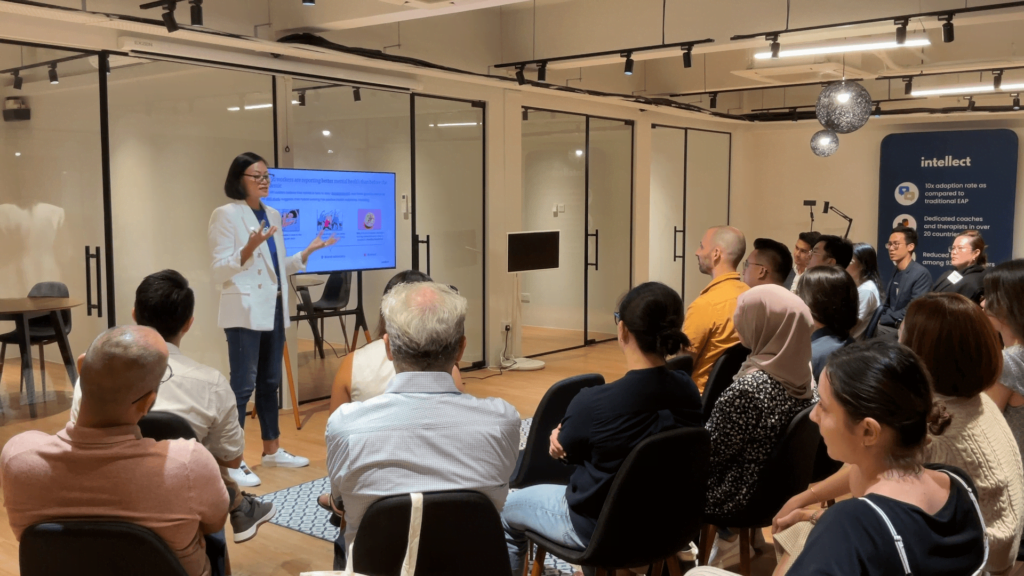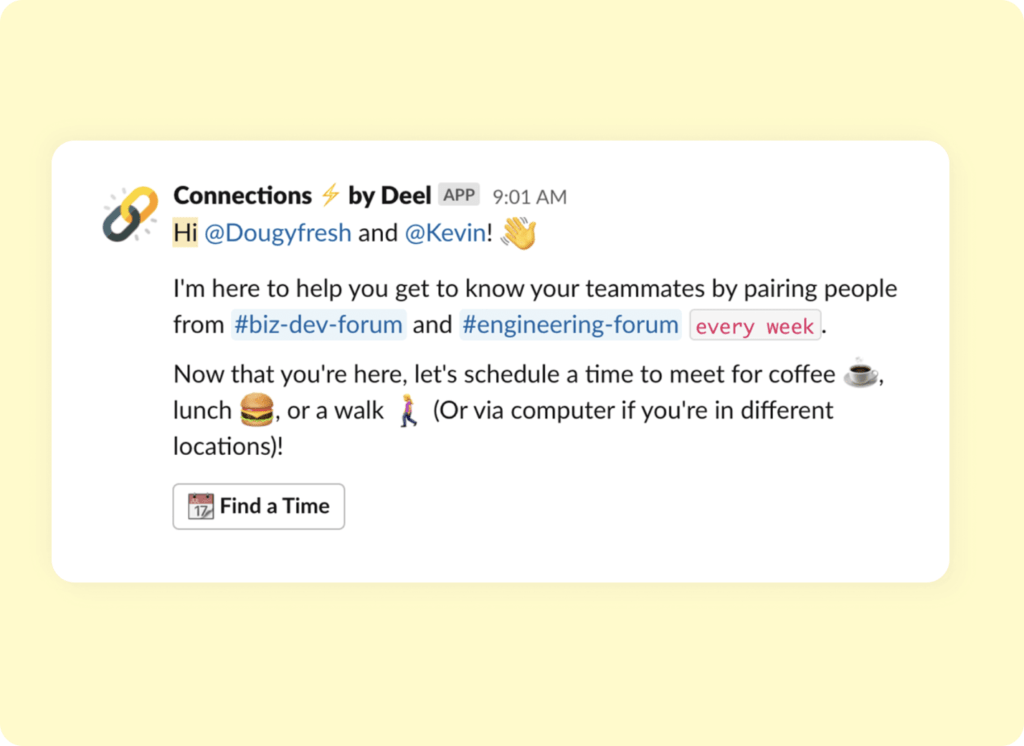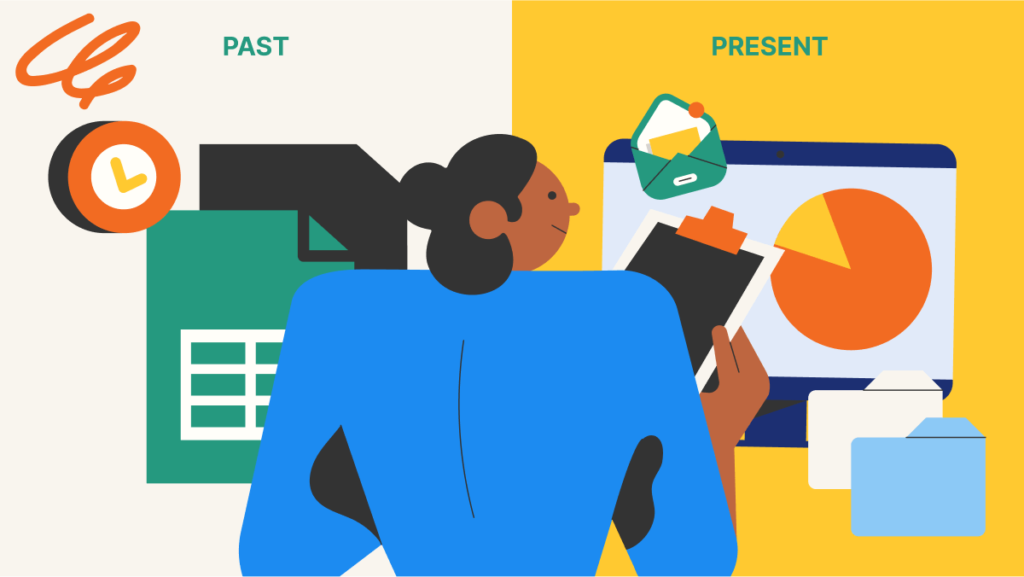Thanks to remote work, recruiting talent across the globe has never been easier. But the potentially isolating nature of such work can also cause issues of absenteeism and presenteeism—with detrimental impacts on the organisation as a result.
Some impacts, such as a drop in employee output, are obvious. Meanwhile, employees can also invisibly suffer from burnout, which harms their wellbeing and productivity.
These are issues that Deel has expertly navigated since its founding in 2019.
Headquartered in San Francisco, the payroll and compliance provider manages a 2,600-strong remote-first workforce across a whopping 100 countries.
Yet, the employee experience at Deel is generally positive, with staff leaving glowing Glassdoor reviews that praise the organisation’s “great team comradery, upward mobility, and amazing inclusive culture”.
How does Deel do it?

In a talk co-presented with Robyn Cam, Intellect’s Principal Coaching Program Specialist, and moderated by Frank Ng, Head of Marketing of Intellect, Deel’s Commercial Leader for Asia, Karen Ng shares four best practices that have helped Deel nurture its remote-first workforce into engaged, productive, and enthusiastic advocates of the organisation.
Four best practices for engaging remote employees
1. Reframe and optimise “face time”
As the persons responsible for their teams’ productivity and output, managers need to be equipped with the mindset and tools for engaging their charges.
Deel’s 1-on-1s by Deel Slack plugin helps its managers schedule regular one-on-one check-in meetings with individual team members. Besides that, the organisation trains its managers to lead by example and model behaviours they want team members to emulate.
Such behaviour could be as simple as managers turning on their cameras during video calls. It could also include themselves working from the office two to three times a week.
To address pushback from employees reluctant to return to the office, Robyn advises introducing more sensitivity to the conversation.
Instead of framing the conversation as “we want you to come back”, managers could change the language along the lines of “meeting in person”. The prospect of connecting with their colleagues in such a manner can help excite employees about uprooting themselves from their homes.
Managers can also set different expectations for returning employees. When employees work from home, for example, managers could encourage them to focus on deep work. But when they come to the office, they could focus on maximising their time with their colleagues in person instead, such as by socialising or having lunch together.
They could even hold team meetings, where everyone has gathered to brainstorm and thrash out issues more collaboratively than they ever could while working apart.

2. Create protocols to minimise miscommunication
While putting down ideas in text form can help improve the clarity of thought and expression, essential non-verbal aspects of communication, such as tone of voice, can easily get lost in the process.
Acknowledging this limitation, Deel prepares its remote employees to anticipate potential miscommunications. It also encourages employees to give the other party the benefit of the doubt if something about the conversation reads as off.
Where tone of voice is especially important for getting the right message across, Deel employees use Slack voice notes to convey their intentions. After a third miscommunication over text, they arrange a call to set things straight.
Corresponding with transparency—and even overcommunication—also helps build trust between team members and between employees and leadership.
“[Communicate] the good, the bad, and the ugly,” Karen advises. “Communicate all of it.”
“We’ll communicate when we need to congratulate someone; we’ll communicate when someone is leaving or has been let go.”
Such transparency in communications helps employees understand the exact situation as it happened. In contrast, leaving things unsaid only creates room for gossip to spread if employees attempt to fill the information gaps on their own.

3. Nurture communities in the digital office
In one study by McKinsey, 39% of respondents reported turning down a job from an organisation after perceiving it to be lacking in inclusivity. So if inclusivity is an important factor in determining whether a candidate accepts a job offer, it continues to be one in motivating an employee to stay for the long haul.
As a provider of employee productivity and engagement solutions, Deel naturally uses its products to foster an inclusive environment and engaged workforce.
Using its Connections by Deel plugin in its Slack workspace, Deel regularly organises virtual water cooler activities and interest groups for its employees to connect over shared (and often non-work-related) passions.
The app also randomly matches up employees in virtual roulettes, creating opportunities for them to get to know each other better.

Karen shared about a time when she had been chatting with a remote colleague from India—not about work, but about biryani recipes, which Karen felt brought them both closer.
“Talking about other things […] helps you create a connection, rather than just sticking to [work-related] numbers,” she says.
More tech-savvy employees may take to Connections by Deel like how fish take to water. But in the spirit of inclusivity, it may be apt to also organise physical meetups that offer bonding opportunities to less tech-inclined folks.
4. Update your benefits package to ensure relevance
Although the exact requirements may differ among countries, organisations are legally required to provide employees with certain employee benefits.
So as candidates weigh job offers, extending employee benefits beyond the mandatory requirements may just swing their decision towards joining your organisation.
Such extra perks also need not cost your organisation more to provide. For example, consider offering:
- Flexible working hours
- Work-from-home or work-from-anywhere policies
- Staff discounts with local vendors
- Mentorship opportunities
Mentorship opportunities may especially appeal to career-driven employees seeking to climb the corporate ladder. As long as your organisation has employees in senior roles, they could readily step in to fulfil the mentor role for more junior employees.
“I always say this: at Deel, there is always someone better than you, and that by default uplifts you [when you connect with them],” shares Karen.
Alternatively, coaching can benefit both high-level executives and rank-and-file employees alike. Learn more about it here.

Engaging remote employees with wellbeing strategies
From being a fresh-faced new hire to becoming a seasoned veteran, your employees’ mental health needs may change over time.
Here’s how you can support them through each phase of the employee journey.
Stage 1: Onboarding
When you’ve onboarded a new employee, schedule mental health check-ins with them. These sessions provide valuable insights into how they are adjusting to their new work environment and allow you to assist with the transition as needed.
You can also help new hires break down their responsibilities into smaller, more manageable chunks by setting career and workplace goals such as:
- “Today, I will…”
- “This week, I will…”
- “By the end of my first month, I will…”
At the same time, organise activities to foster engagement, collaboration and trust among team members.
To build trust among employees who haven’t met or don’t typically work together, Frank suggests arranging group huddle sessions for employees to tackle a non-work problem.
“They come together for about half an hour and jam and then leave feeling that they can understand others’ viewpoints now and trust them a bit more,” he says.

Stage 2: After probation
As employees become accustomed to their duties, providing personalised coaching support can help “stretch” them to improve their skill sets and get ready for extra responsibility.
Train your managers to set SMART goals with employees that keep the latter accountable for their work output. Managers should also discuss how these goals align with workplace objectives.
As Robyn shares, employees who can connect the work they do with the organisation’s mission and values will feel more connected and engaged at work. In turn, “they’re more likely to stay”.
Managers also shouldn’t shy away from holding difficult workplace conversations with employees, as these can result in significant improvements in employee productivity and wellbeing.
The key is to focus on behaviours that have room for improvement and not specific personal traits or qualities. Anchoring the conversation on such objective facts can facilitate a productive discussion without having it devolve into perceived personal attacks on an employee’s character.
Stage 3: Progression
After implementing measures to improve employee wellbeing, their positive effects may be immediately visible.
However, managers and HR may find it helpful to quantify such improvement—and its impacts on the organisation’s bottom line—to justify continuing these wellbeing programmes for the long term.
Intellect Dimensions, the platform’s latest addition, helps organisations to track, measure, and enhance the success of wellbeing strategies by:
- Engaging employees with regular and quantifiable personal growth check-ins
- Identifying growth intervention opportunities from aggregated and anonymised wellbeing data

With this proprietary tool, organisations can make informed decisions about their wellbeing strategy and expect an estimated 5-10x financial return on investment. For the first time, HR leaders can bring a scientifically-validated ROI measurement to the boardroom.
Explore how Intellect can boost employee wellbeing and engagement in your organisation by booking a demo here.






